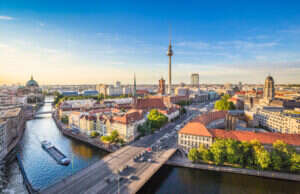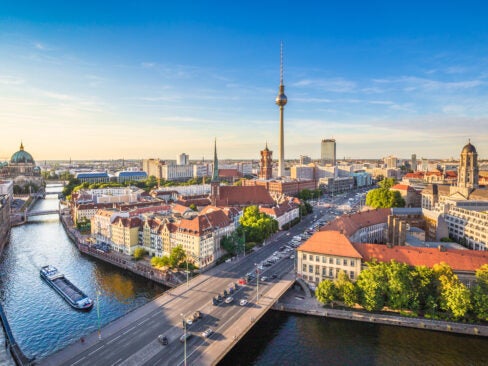
Since the Iron Curtain fell in 1989, no city in Europe has come alive like Berlin.
When the Berlin Wall was demolished, the capital was united for the first time in decades and its people were determined to start afresh. Handsome new buildings sprung from the rubble, dour grey concrete got a lick of paint, and lush green parks flourished once again. Despite this thirst for innovation, Berliners still take pride in their pre-war history, and the city is studded with some breathtaking memories of Prussia. Here are some of the highlights.
UNTER DEN LINDEN

Marlene Dietrich once sang, ‘As long as the old linden trees still bloom, Berlin is still Berlin’, and to this day this grand tree-lined boulevard remains the city’s backbone.
No trip to the capital would be complete without a stroll from Schlossplatz at the east end to the Tiergarten at the west, passing some of Berlin’s most significant landmarks en route. Heavily bombed during World War II, the avenue has since had a major facelift, and what we see today has the impact intended by the city’s Prussian forbears. Top sights include the Deutsches Historisches Museum and the Staatsoper (State Opera House), although the Brandenburg Gate is by far the headline act.
Mitte district
MUSEUM ISLAND

In 1999, UNESCO named Museum Island a World Heritage Site, and as a cluster of Berlin’s five most important museums, this is the perfect destination for a day of culture.
Standing triumphantly on the Spree River, the island complex includes the Pergamonmuseum, Bode-Museum, Neues Museum, Altes Museum and the Alte Nationalgalerie. They contain an enthralling collection of art and relics from ancient Greek to early modernist, with the 170-159 BC Pergamon Altar perhaps the most noteworthy of the permanent exhibits. The nearby Schlossbrücke (Castle Bridge) and Berlin Cathedral are also important Berlin sites, and on a sunny day, the grassy Lustgarten is a perfect spot to rest tired feet and picnic.
GENDARMENMARKT

Hailed by many as Germany’s most beautiful square, the Gendarmenmarkt should be high on any visitor’s list.
Designed by Johann Arnold Nering in 1688, the original square survived the best part of three centuries before Allied bombs destroyed most of its proudest pieces. Thankfully, meticulous reconstruction has brought the square back to life and new businesses clamor for a spot near its cobbles. Particular crowd-pleasers are the German Cathedral and the French Cathedral—both early 18th century—as well as Karl Schinkel’s early 19th century Concert House. The annual Christmas Market in the square is one of a kind and a real slice of traditional German festivities.
Between Charlottenstrasse & Markgrafenstrasse
CHECKPOINT CHARLIE MUSEUM

It is impossible to escape the legacy of the Berlin Wall when exploring the German capital today.
What is now a thriving, unified city was, for almost 30 years, two cities divided by a fortified barrier. With typical determination, some 5,000 Berliners still managed to defect from East to West, using a variety of ingenious methods. Their stories are told at Checkpoint Charlie, the former border crossing that remains one of the most potent symbols of the Cold War. The museum also commemorates those who died while trying to defect, making a tour of the site as poignant as it is inspiring. Make the most of your visit with a private guided tour.
KULTURFORUM

With echoes of Museum Island, this complex of galleries has rooted itself deeply into Berlin’s cultural landscape.
The Gemäldegalerie is famed for its Old Masters, particularly works by Frans Hals and Rembrandt, while the nearby Neue Nationalgalerie houses an extensive collection of 20th century paintings. Modernist heavyweight Mies van der Rohe designed the Neue Nationalgalerie in the 1960s and for modern art lovers, the building alone is worth the trip. The Kulturforum complex also includes the Berlin Philharmonie, one of the world’s most prestigious concert halls and home to the renowned Berlin Philharmonic. Private tours can be arranged for all sites within the Kulturforum.
REICHSTAG
The restored glass cupola on the German parliament building has become one of the most admired feathers in Norman Foster’s cap, and rightly so.
The dome is impressive enough from the outside, but only by climbing up its glassy guts can you appreciate its full glory. This feat of engineering has revived the much-maligned building both physically and symbolically, and as a microcosm of Berlin’s history, the Reichstag is without compare. Hire a private guide for a compelling insight into the site’s history and architecture.






